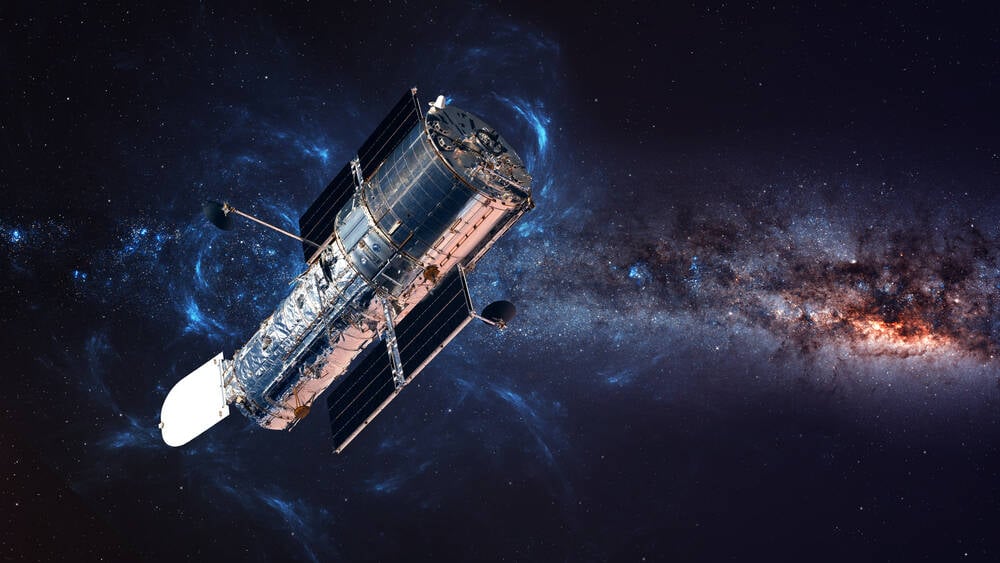Hubble is not only online again after a failure, but is already taking photos of the Kosmos • The Register
images The Hubble Space Telescope is back in action, doing what it does best – capturing breathtaking images of the universe – after more than 50 NASA engineers worked hundreds of hours to get the instrument working again.
After redundant components within the circulating observatory were activated on Friday to fix a hardware error, the telescope was able to use its sensors again. NASA released two photos of strange galaxies that Hubble took over the weekend: one shows two crossing galaxies and the other shows a large spiral galaxy with three arms.
Left: ARP-MADORE2115-273 is an image of two galaxies colliding in the southern hemisphere. Right: ARP-MADORE0002-503 is a large spiral galaxy with three arms … Click to enlarge. Image source: NASA, ESA, STScI, Julianne Dalcanton (UW), Alyssa Pagan (STScI)
About a month ago, Hubble’s on-board computer, which controls his instruments, mysteriously froze, forcing the main computer to put the observatory’s sensors in an inactive safe mode. It was feared by some that the old Hubble was dead after attempts to revive the machine failed.
NASA had to dig up documents from 30 to 40 years old to investigate hardware lock-up, and engineers were even pulled out of retirement for advice. By switch to The US space agency Hubble was finally able to bring backup power supply electronics and a backup payload computer back online.
Now all the systems are up and running and hopefully the Hubble controller’s biggest headache will be dealing with the backlog of requested observations.
“I’m very excited to see Hubble have the universe back in view and capture the kind of images that have fascinated and inspired us for decades,” said NASA Administrator Bill Nelson said in a statement.
“This is a moment to celebrate the success of a team that is truly dedicated to their mission. Through their efforts, Hubble will continue its 32nd year of discovery and we will continue to learn from the observatory’s transformative vision. “
Difficult remote support
At first, NASA thought the problem was a faulty memory module that was degraded over time by absorbing too much cosmic rays. But using an alternative onboard module did not fix the problem. Further analysis suggested that the fault had something to do with a dubious power control unit. When the team switched to a backup unit to power the backup payload computer, Hubble came back to life.
“The switch required 15 hours of spacecraft commanding from the ground,” said Jim Jeletic, assistant project manager for the Hubble Space Telescope, which works at NASA’s Goddard Space Center.
“The main computer had to be turned off and a backup computer in safe mode temporarily took over the spacecraft. Several boxes also had to be switched on that had never been switched on before in space, and their interfaces had to be switched on other hardware.
This isn’t Hubble’s first failure. In 2008, the Science Instrument and Command & Data Handling unit failed and a four-person astronaut crew repaired the machine in orbit in 2009. 12 years later, backup components in this replacement hardware were brought up to cope with this crisis.
The telescope was launched in 1990 and was designed to last for 15 years. However, over 30 years later, it is still working, watching the sky.
“Hubble is in good hands,” said Kenneth Sembach, director of the Space Telescope Science Institute, which supports Hubble’s scientific operations. “The Hubble team has once again demonstrated their resilience and skill in addressing the inevitable anomalies created by operating the world’s most famous telescope in harsh space conditions.
“I am impressed with the team’s commitment and shared goal over the past month to get Hubble back up and running. Now that Hubble is once again offering unparalleled views of the universe, I expect it will continue to surprise us with many more scientific discoveries. ”®

